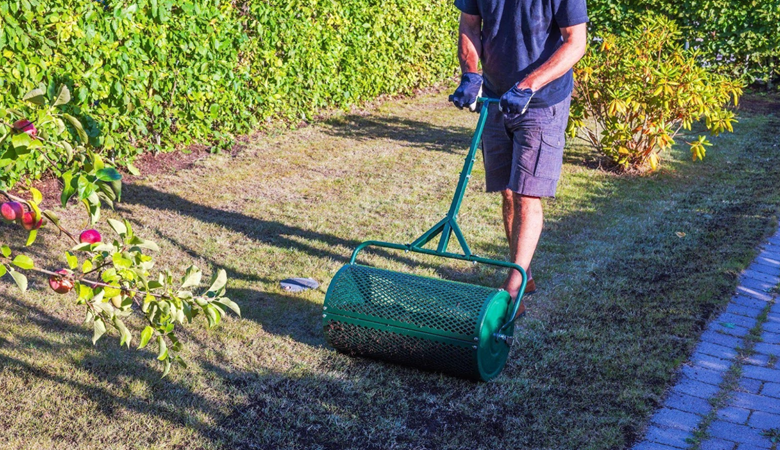5 Landscaping Hacks That Save Homeowners Money

For many homeowners, landscaping feels like an expense, but with the right choices, it can actually become a long-term investment. Smart landscaping not only boosts curb appeal but also reduces maintenance costs, lowers utility bills, and makes outdoor spaces easier to manage year after year. With thoughtful planning and guidance from a professional, you can search for landscapers near me, and don’t need to overspend to achieve a functional and attractive yard.
In fact, a University of Maryland study analyzing 175 landscape architecture cases across the U.S. quantified benefits such as increased property values, reduced carbon emissions, stormwater management savings, and local economic development. Simple upgrades, local plant choices, and a few money-saving strategies can go a long way in making landscaping both affordable and sustainable.
Why Professional Landscaping Pays Off in the Long Run
While DIY landscaping can feel cost-effective at first, many homeowners discover that mistakes, like planting the wrong species, overwatering, or poor soil preparation, end up costing more to fix later. Professional landscapers bring the right tools, plant knowledge, and design experience to make sure your investment delivers results.
Key benefits include:
- Lower Maintenance Costs: Proper plant selection reduces watering, fertilizing, and replanting.
- Energy Savings: Strategically placed trees and shrubs can reduce cooling and heating costs for your home.
- Property Value Boost: A well-maintained yard can increase resale value by as much as 10–15%.
- Time Savings: Professionals handle the hard work, freeing up your weekends.
When you work with trusted landscapers near me, you’re not just paying for labour, you’re investing in long-term savings and a yard designed to thrive.
Steps to Save Money with Landscaping
Saving money on landscaping isn’t just about cutting costs, it’s about making smart, long-term choices that reduce waste and maintenance. Here’s how homeowners can get started:
- Assess Your Yard’s Needs:Take note of sun exposure, soil type, and problem areas before investing in plants or materials. This prevents wasted spending on the wrong choices.
- Set a Realistic Budget: Decide how much you want to spend upfront and what can be phased out over time. Many improvements, like planting trees or adding mulch, can be done gradually.
- Choose Native and Drought-Resistant Plants: Native species thrive in local climates with minimal upkeep, while drought-resistant options save on water bills.
- Invest in Smart Irrigation: Replace outdated sprinklers with drip irrigation or weather-based systems to cut water usage significantly.
- Use Mulch and Ground Cover: Mulch reduces evaporation, controls weeds, and keeps soil healthy, all of which reduce long-term costs.
- Balance DIY with Professional Help: Do smaller tasks like planting or mulching yourself, but hire professional landscapers near me for design, irrigation, or large projects where mistakes can be costly.
5 Landscaping Hacks That Save Homeowners Money
Smart landscaping doesn’t require massive investments. With the right choices, you can save money each year while still enjoying a beautiful outdoor space. Here’s a closer look at five hacks that make a big difference:
1. Plant Native Trees and Shrubs
Choosing native species is one of the simplest and most effective ways to cut landscaping costs. Plants like dogwood, serviceberry, or native shrubs thrive in the local climate and soil conditions, meaning they require less water, fertilizer, and maintenance. Because they’re naturally resistant to local pests and diseases, you’ll also save money on pesticides and treatments. Over time, these hardy plants establish stronger root systems that reduce replacement costs.
2. Use Mulch to Lock in Moisture
Mulching is inexpensive but delivers long-term savings. A thick layer of mulch around trees, shrubs, and flower beds:
- Prevents water from evaporating too quickly.
- Keeps soil temperatures stable.
- Suppresses weed growth, which cuts back on herbicide costs.
- Improves soil health as it decomposes.
By reducing the need for constant watering and weeding, mulch helps homeowners save both time and money while protecting plants.
3. Install Smart Irrigation Systems
Water is one of the biggest recurring expenses in landscaping. Traditional sprinklers often waste water by overwatering or spraying sidewalks and driveways. Smart irrigation systems, however, adjust automatically based on weather and soil conditions. These systems can reduce outdoor water use by up to 30%, which translates into lower utility bills. While there’s an upfront investment, the savings on water costs and healthier plants make it worthwhile.
4. Choose Perennials Instead of Annuals
Annual flowers need to be replanted every year, which adds up quickly in terms of both cost and labor. Perennials like hostas, daylilies, and coneflowers, on the other hand, return year after year with little effort. Once established, they require less water and maintenance than annuals while still delivering vibrant colors and seasonal interest. By choosing perennials for most of your beds and mixing in a few annuals for variety, you can save money without sacrificing beauty.
5. Optimize Lawn Size
Lawns can be one of the most expensive parts of landscaping, requiring regular mowing, fertilizing, watering, and pest control. If large sections of your yard go unused, consider reducing the size of your lawn. Replace those areas with native ground covers, decorative stones, or hardscaping like patios or walkways. Not only will this cut down on maintenance costs, but it also creates functional outdoor spaces that add long-term value to your property.
Read Also: Smart Cities: The Role of Technology in Urban Transformation
Bonus Hack: Xeriscaping for Long-Term Savings
Xeriscaping, or designing landscapes with drought-resistant plants, is one of the smartest investments homeowners can make. Instead of relying on water-intensive grass or delicate ornamentals, xeriscaping uses native and hardy plants that can survive with minimal watering and care.
Benefits of Xeriscaping include:
- Lower Water Bills: Outdoor water use can drop by as much as 60%, reducing one of the biggest recurring landscaping expenses.
- Less Maintenance: Drought-tolerant plants require little upkeep, saving on time and labor.
- Durability: These plants are naturally resistant to heat and pests, which means fewer replacements and treatments.
- Eco-Friendly: Xeriscaping supports sustainability by conserving water and creating pollinator-friendly environments.
While the average xeriscaping project may cost $5–$20 per square foot, the long-term savings in water and upkeep quickly offset the initial investment. For homeowners looking to balance beauty with budget, this approach is a proven win.
Final Thoughts
Landscaping doesn’t have to drain your wallet. By focusing on smart strategies like planting native species, using mulch, investing in smart irrigation, and reducing lawn size, homeowners can significantly cut long-term costs while still enjoying a yard that looks stunning year-round. Adding options like xeriscaping only amplifies those savings, making your outdoor space both eco-friendly and cost-effective.
Partnering with professional landscapers near me ensures these money-saving techniques are implemented correctly and efficiently. With expert guidance, you can achieve the perfect balance of beauty, functionality, and affordability in your landscape.



